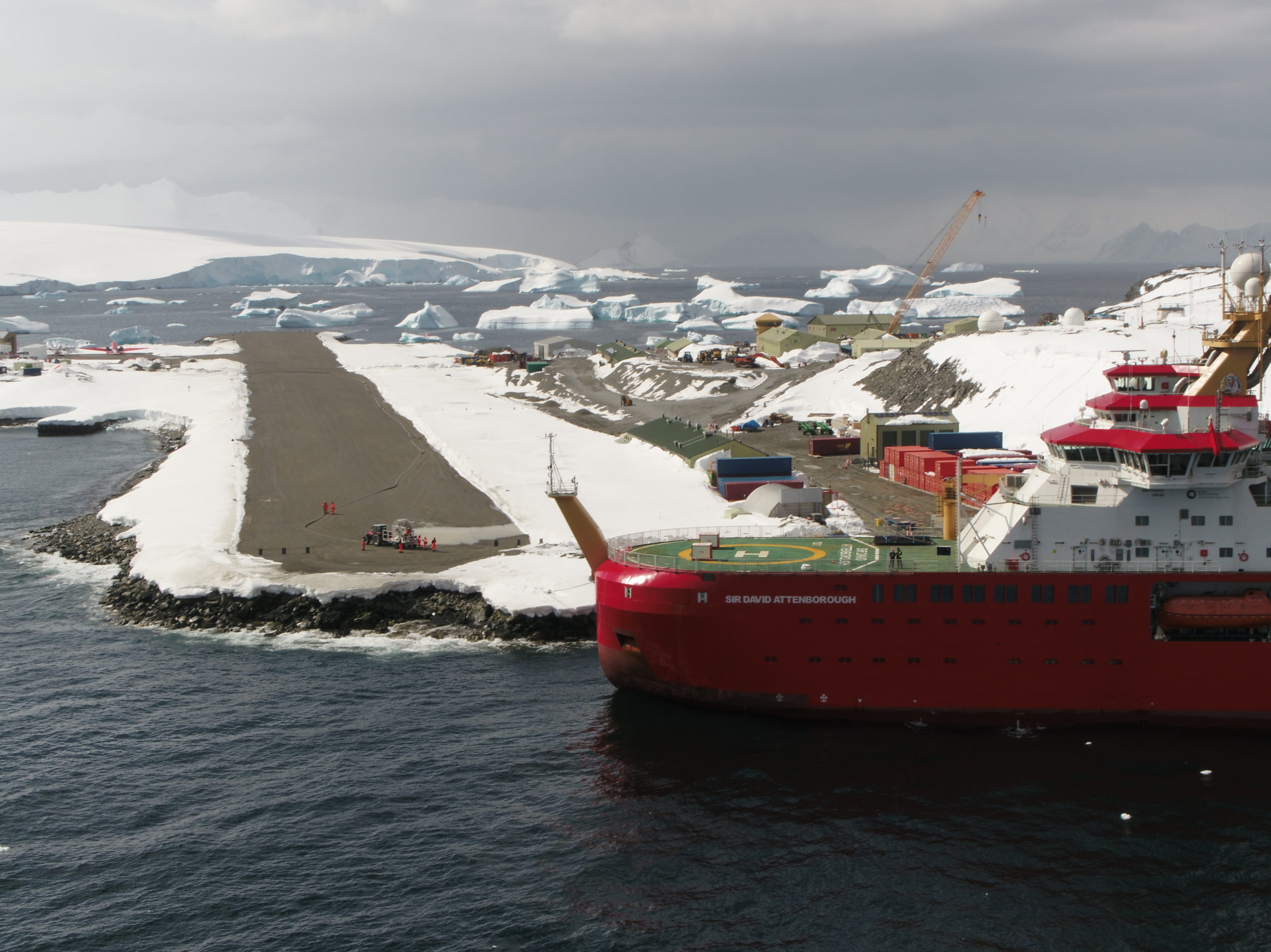New polar research ship embodies ‘spirit of Shackleton’
One hundred years on from the death of the famous polar explorer Sir Ernest Shackleton, the UK’s new polar research ship, RRS Sir David Attenborough, will be exploring the very same region where his ship, The Endurance, was lost in the pack ice – heralding a new age of Antarctic exploration.
5 January 2022 marks the centenary of the death of the famous Anglo-Irish explorer Sir Ernest Shackleton and the end of the ‘Heroic Age of Antarctic Exploration’.
Shackleton’s ship became stuck in the ice of the Weddell Sea, which led to an epic mission crossing the open ocean to reach South Georgia and rescue the crew. The ship later sunk and is still to be recovered.
It also marks the next phase of the UK’s new polar research ship, the RRS Sir David Attenborough’s exploration of Antarctica – leaving Signy Research Station at the mouth of the Weddell Sea to return to the Falkland Islands. The RRS Sir David Attenborough replaced British Antarctic Survey’s (BAS) two previous ships – the RRS James Clark Ross and the RRS Ernest Shackleton, named after the famed polar explorer.

Speaking on the centenary, the UK’s Minister responsible for Polar Regions, Amanda Milling, says:
“One hundred years on from his death, the spirit of Shackleton lives on in a new age of scientific exploration in Antarctica, embodied in the UK’s new polar research ship. The UK is leading the world in polar science, with the British Antarctic Survey driving understanding of global climate change. Early explorers raced to be the first to reach the South Pole and to conquer the planet’s furthest reaches. Today, British researchers are leading the fight to protect the planet from the existential threat of climate change.”
The RRS Sir David Attenborough visited London Greenwich ahead of the COP26 climate conference in Glasgow, and arrived at BAS’ Rothera Research Station in Antarctica for the first time on 17 December. The ship is now continuing its mission, making calls at Signy, King Edward Point and Bird Island research stations, and heading to the Stange Ice Front for its ice trials.

The state-of-the-art research vessel is at the forefront of the next generation of Antarctic research, for example using drones and submersibles. During its first mission, the RRS Sir David Attenborough will deploy robotic instruments that drift with the Southern Ocean currents (Argo floats), as part of an international oceanography programme. The ship will also transport essential cargo to support the International Thwaites Glacier Collaboration, a collaboration between UK and US scientists to investigate one of the most unstable glaciers in Antarctica.
BAS’s world-class science is driving understanding of climate change, particularly its effects on the ice caps. BAS researchers at Halley Station discovered the hole in the Ozone layer, prompting international action to ban CFCs that were causing it.
Ship Captain Will Whatley has commanded the ship on its maiden voyage to Antarctica. He says:
“The maiden voyage of the RRS Sir David Attenborough has felt more like an expedition than any other polar trip I have done before, this is a good reminder to me and those on board of the achievements made by the early polar explorers. 100 years on from the passing of Sir Ernest Shackleton the British Antarctic Survey continues to push the boundaries of polar research but now with our brand new ship. The crew on board the RRS Sir David Attenborough are all remarkably proud to be following in the footsteps of the great polar explorer in this new era of Antarctic exploration.”